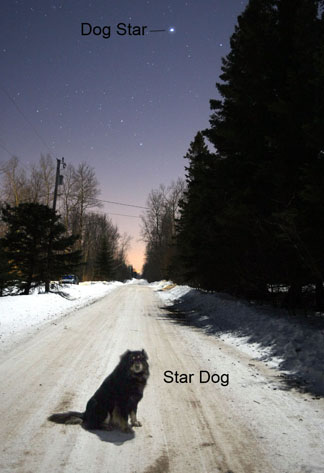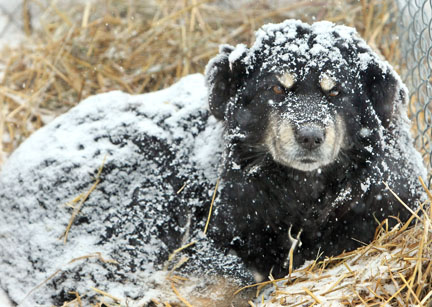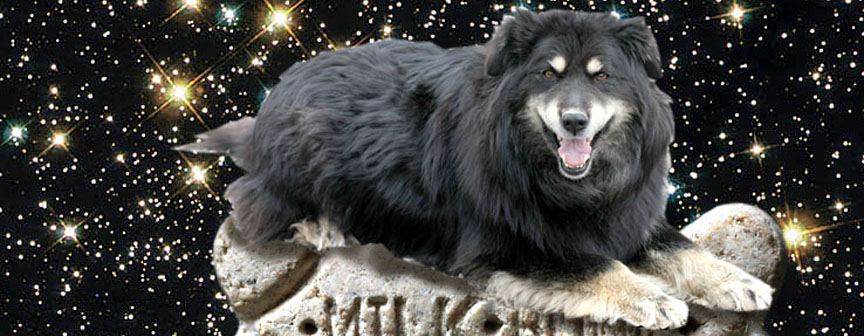
Like many of you, I’m the owner of a furry Canis Major. Her name is Sammy. We always thought she was mostly border collie, but my daughter gifted me with a doggie DNA kit a few years back, and now we know with scientific certainty that she’s a mix of German shepherd, Siberian husky and golden retriever. Yeah, she’s a mutt.
Sammy’s going on 17 years old now — that’s human years — and has neither the spunk nor bladder control of a young pup. She wanders, paces, gets confused. In her aging, I see what’s in store for all of us as we pass from one stage of life to the next.
Intentionally or not, we humans often leave a legacy before we depart. Maybe a big building, a work of art or an exemplary life. As I stare down at my panting dog, it occurs that she’s leaving a legacy too, one she’s completely unaware of but which I’ll always appreciate.
Thanks to my dog I’ve seen more auroras and lunar halos that I can count. That goes for meteors, contrails, space station passes, light pillars and moonrises, too. All this because she needs to be walked in the early morning and again at night. This simple act ensures that while Sammy sniffs and marks, I get to spend at least 20 minutes under the sky. Nearly every night of the year.

I’m an amateur astronomer and keep tabs on what’s up, but my dog makes sure I don’t ignore the sky. Let’s say she keeps me honest. There’s no avoiding going out or I’ll pay for it in whimpering and cleanup.
There were times I wouldn’t be aware an aurora was underway until it was time to walk the dog. When we were done, I’d dash away to a dark sky with camera and tripod. Other nights, walking the dog would alert me to a sudden clearing and the opportunity to catch a variable star on the rise or see a newly discovered comet for the first time. Thanks Sammy.
Amateur astronomers are familiar with eternity. We routinely observe stars and galaxies by eye and telescope that remind us of both the vastness of space and the aching expanse of time. I have only so many years left before I spend the next 10 billion years disassembled and strewn about like that scarecrow attacked by flying monkeys. But when I see the Sombrero Galaxy through my telescope, with its 29-million-year-old photons setting off tiny explosions in my retinas, I get a taste of eternity in the here and now.
That’s where Sammy offers yet another pearl. Dogs are far better living in the moment than people are. They can eat the same food twice a day for a decade and relish it anew every single time. Same goes for their excitement at seeing their owner or taking a walk or a million other ways they reveal that this moment is what counts.

People tend to think of eternity as encompassing all of time, but Sammy has a different take. A moment fully experienced feels like it might never end. Lose yourself in the moment, and the clock stops ticking. I love that feeling. That’s how my dog’s been living all along. Canine wisdom: one billion years = one moment. Both feel like forever.
Sammy’s lost much of her hearing and some of her eyesight. We’re not sure how long she has. Maybe a few months, maybe even another year, but her legacy is clear. She’s been a great pet and teacher even if she never figured out how to fetch. We’ve hiked hard trails together and then rested atop precipices with the sun sinking in the west. I look into her clouded eyes these days and have to speak up when I call her name, but she’s been and remains a “Good dog!”

